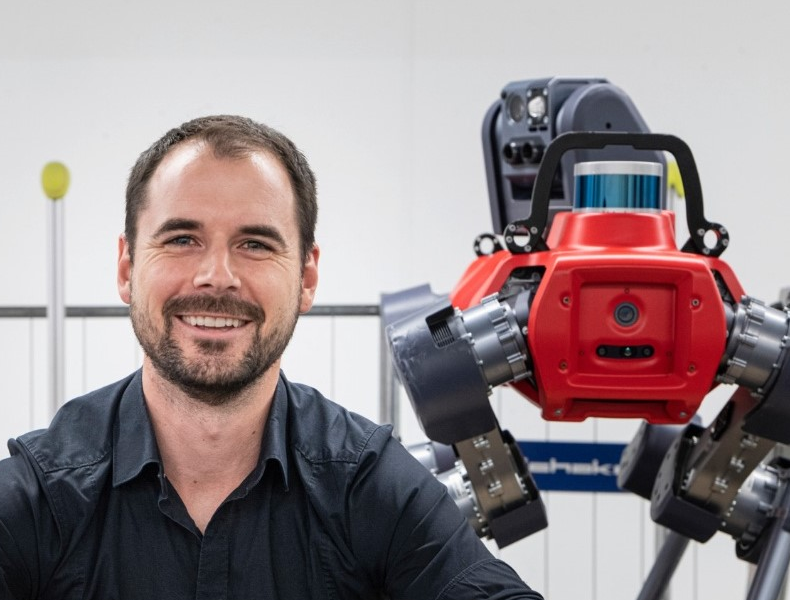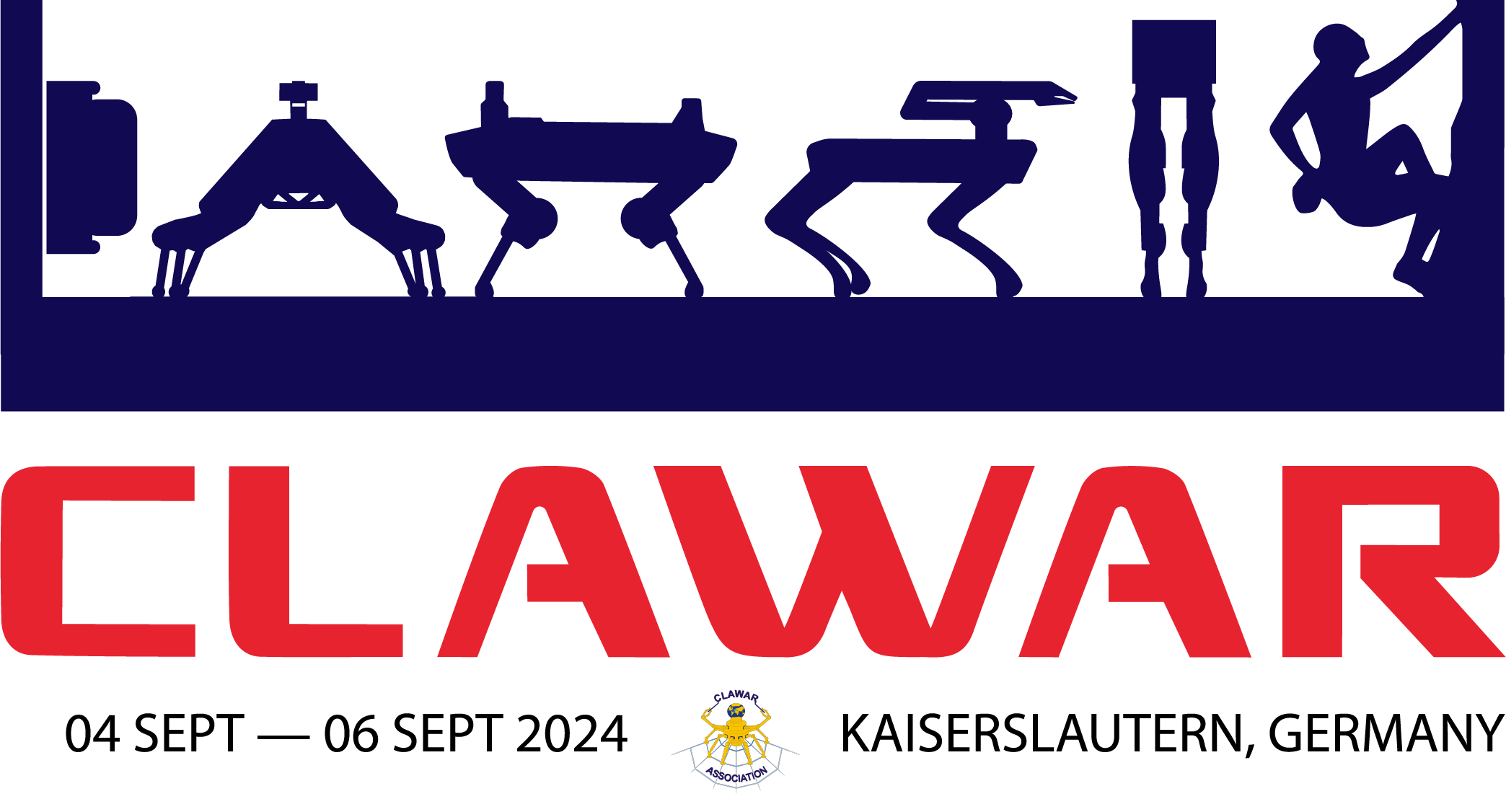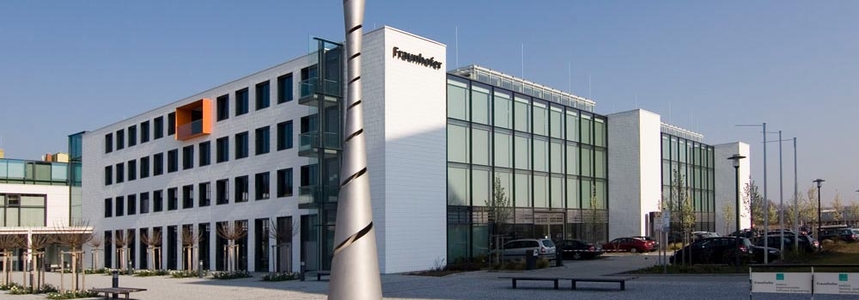Navinda Kottege
Two, Four, or Six ?
Legged Robots for Exploration and Inspection in the Real World
Abstract: The past decade has seen a massive increase in interest in legged robots. This was mainly driven by the commercial availability of affordable quadruped platforms as well as the advancements made in legged robot locomotion research. The combination of AI/ML based control, robust perception systems and the availability of lower cost computing hardware has brought these machines out of research labs, into the consumer domain. This talk will cover the many examples of legged robots; two legged, four legged as well as six legged, along with insights into how they are being used to perform tasks in the real world.

Bio: Dr Navinda Kottege is the Research Director of the Cyber-Physical Systems Research Program (Robotics, Computer Vision and Distributed Sensing Systems) at Commonwealth Scientific and Industrial Research Organization (CSIRO), partner within the Queensland Center for Advanced Technologies (QCAT).
Navinda joined the CSIRO as a Postdoctoral Fellow soon after receiving his PhD in Engineering from The Australian National University in 2009. In 2011, Navinda initiated and then led the legged robot research within CSIRO, an activity grown into a world-class R&D capability. Before becoming the Research Director, he led the Robotics and Autonomous Systems group and conducted research in multi-legged robot navigation, perception, and control. The main focus of his activities he laid on legged navigation in complex, unstructured environments. From 2020 to 2021 he was the Chair of the IEEE Queensland joint chapter for Control Systems/Robotics and Automation Societies. Today, he is a senior member of the IEEE, a member of the ACM, and an Adjunct Associate Professor at both Queensland University of Technology and University of Queensland
Marco Hutter
27 Years of Climbing and Walking Robots – Are we there ?
Abstract: In recent years, we have seen tremendous progress in the field of legged robotics and the application of quadrupedal systems in real-world scenarios. Besides the massive improvement of the hardware systems to rugged and certified products by a number of companies, recent developments in perception, navigation planning, and reinforcement learning for locomotion control have unleashed a new level of robot mobility and autonomy to operate in challenging terrain. In this presentation, I will talk about our work on control and autonomy for legged robots and other mobile machines. I will give insights into the underlying methodologies, present some of the most interesting findings, and talk about real-world deployments in the wild. With thousands of (commercial) legged robots in the field and tremendous progress in the technology of the last decade, what are the remaining research questions for our community?

Bio: Marco is a professor for robotic systems, director of the center for robotics at ETH Zurich and director of Zurich office of the The AI Institute.
His research interests are in the development of novel machines and their intelligence to operate in rough and challenging environments. Together with his team, he realized a number of legged robots, mobile manipulators, and autonomous excavators that find applications including industrial inspection, construction and forest operations, household assistance, and extraterrestrial exploration. Marco is part of the National Centers of Competence in Research (NCCR) Robotics, Digital Fabrication, and Automation, PI in various international projects (e.g. EU NI, DigiForest), and winner of international challenges such as the DARPA SubT competition. Moreover, Marco is a co-founder of several ETH Startups, such as ANYbotics AG or Gravis Robotics AG, which commercialize legged robots and autonomous construction equipment.
Alin Albu-Schäffer
Torque Controlled or Intrinsically Compliant ?
DLR’s perspective on robust and efficient biped and quadruped locomotion
Abstract: Robots are not only machines which are supposed to relieve humans from dangerous or routine work – they are also a scientific endeavour attempting to better understand human and animal motion and intelligence in a synthetizing way, by using the system analytic tools of engineering and computer science. As such, legged robots, in particular humanoids and quadrupeds, attracted a lot of attention and research effort in recent years. The exploding commercial interest in humanoids in the last two years underlines the huge potential of this technology.
Walking robots are supposed to closely interact with their human users or to operate in remote, unknown environments – in both cases, robustness is a central issue, as precise mathematical models for the interaction cannot be expected.
I will present in this talk two approaches to legged locomotion, which we followed during the last decade at DLR in order to achieve performance and robustness. The first approach, used for the development of the humanoid TORO, leverages the torque-controlled technology initiated at DLR for robot manipulators, which was subsequently commercialized by KUKA, Franka.Emika, Agile Robots and Medtronic. Precise joint torque interfaces allow performant whole-body control and motion planning for bipedal locomotion, also on uneven ground, as well as safe interaction with humans. Controlling motion at low energetic cost, both from mechanical and computational point of view, certainly constitutes one of the major locomotion challenges in biology and robotics.
With the design of our experimental elastic quadruped robot Bert we attempt to demonstrate that robots can be designed and controlled to walk highly efficient by exploiting resonance body effects. To do so, however, legged robots need to achieve limit cycle motions of the highly coupled, non-linear body dynamics. This led us to fundamental research on the theory of intrinsic modal oscillations of nonlinear systems as well as on their stabilisation and control. I will present recent results in this direction from my ERC Advanced Grant project M-Runners.
Finally, putting the human in the centre of robot development also means going beyond the pure field of engineering and interacting with bio-sciences. I will particularly highlight in this respect the interplay of biomechanics and neuro-control with advanced robotics design and control. Humans can also directly benefit from this research through the development of better human-machine interfaces, robotized medical procedures, and prosthetic and rehabilitation devices which will even more reduce the barrier between humans and robots in the future.

Bio: Alin Albu-Schäffer received his M.S. in electrical engineering from the Technical University of Timisoara, Romania in 1993 and his Ph.D. in automatic control from the Technical University of Munich in 2002. Since 2012 he is the head of the Institute of Robotics and Mechatronics at the German Aerospace Center (DLR). Moreover, he is a professor at the Technical University of Munich, holding the Chair for “Sensor Based Robotic Systems and Intelligent Assistance Systems” at the Computer Science Department.
His research interests include robot design, modeling and control, nonlinear control, flexible joints and variable compliance robots, impedance and force control, physical human-robot interaction, bio-inspired robot design and control. He received several awards, including the IEEE King-Sun Fu Best Paper Award of the Transactions on Robotics in 2012 and 2014; several ICRA and IROS Best Paper Awards as well as the DLR Science Award. He was strongly involved in the development of the DLR light-weight robot and its commercialization through technology transfer to KUKA. He is the coordinator of euROBIN, the European network of excellence on intelligent robotics.





